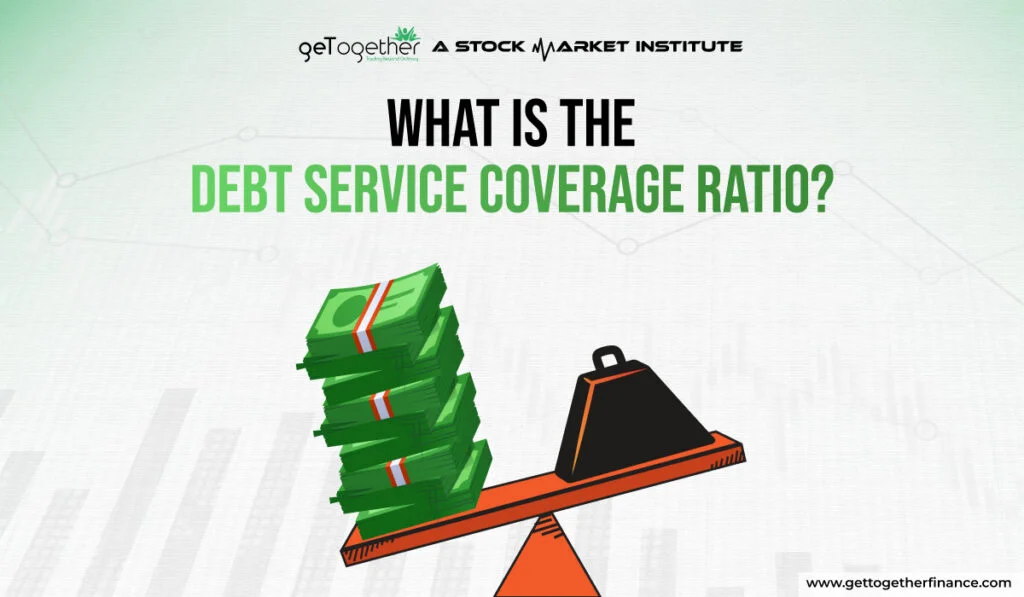What is the Debt Service Coverage Ratio (DSCR)?


Table of Contents
ToggleOverview
When it comes to expanding your business, securing financing is often crucial. Many companies rely on borrowing capital to fuel their growth. But before lenders, banks, or investors approve a loan, they want to be sure you can manage it well. That’s where the Debt Service Coverage Ratio (DSCR) comes in. It’s a key metric used to evaluate a company’s ability to repay its debts.
This blog will decode what is debt service coverage ratio, how to calculate and interpret it to significantly improve your chances of getting the financing you need.
So without further ado, let’s dive deeper.
What is Debt Service Coverage Ratio (DSCR)
The Debt Service Coverage Ratio (DSCR) is a key financial metric used by lenders to assess a company’s ability to repay its existing and potentially new debt obligations. It essentially measures how much cash flow a company generates compared to its annual debt service payments (including both principal and interest).
The debt-service coverage ratio (DSCR) is a crucial measure of a company’s financial health, particularly for those heavily reliant on debt. It assesses a company’s ability to meet its debt obligations by comparing its operating income to its total debt payments, including both principal and interest. Lenders, stakeholders, and partners closely scrutinise DSCR metrics, often setting specific terms and minimums in loan agreements.
Formula of Debt Service Coverage Ratio (DSCR)

The formula for calculating the Debt Service Coverage Ratio (DSCR) is:
DSCR = Net Operating Income (NOI) / Total Debt Service
Here’s a list of the components:
- Net Operating Income (NOI): Includes company’s earnings before income taxes, depreciation, and amortisation. It reflects the company’s core operating profitability. You can find Net Operating Income (NOI) on the company’s income statement.
- Total Debt Service: This shows the total annual amount of cash a company needs to pay to cover its debt obligations. It includes both principal and interest payments on all outstanding loans and bonds. Mostly it can be found in financial statements or loan agreements.
Calculating the Debt Service Coverage Ratio (DSCR) becomes more complex when considering income taxes, as interest payments are tax-deductible, while principal repayments are not.
To accurately calculate total debt service, the formula is adjusted to include both tax-deductible interest and principal repayment:
TDS = (Interest × (1 − Tax Rate)) + Principal
Where:
- TDS = Total debt service
What is a Good DSCR Ratio?
A good Debt Service Coverage Ratio (DSCR) is generally 1.25 or higher, indicating that a company or individual generates enough income to comfortably cover debt obligations. A DSCR above 1 means there’s sufficient cash flow to pay off debts, while a ratio below 1 signals potential difficulty in meeting debt payments. Lenders often look for a healthy DSCR to assess creditworthiness and minimize risk.
Advantages and Disadvantages of DSCR

The Debt Service Coverage Ratio (DSCR) offers valuable benefits for both borrowers (businesses) and lenders:
For Borrowers (Businesses):
- Securing Loans: A strong DSCR (generally above a certain threshold set by the lender) increases your chances of getting loan approval. It shows your ability to handle additional debt comfortably.
- Negotiating Leverage: A high DSCR can give you leverage during loan negotiations. You might be able to secure a better interest rate or loan terms based on your strong financial health.
- Monitoring Financial Health: Tracking your DSCR over time can be a useful tool for internal financial management. It helps you assess your ability to manage existing debt and plan for future borrowing needs.
For Lenders:
- Reduced Risk: A high DSCR signifies a lower risk of loan defaults. Lenders are more confident that borrowers can meet their repayment obligations, protecting the lender’s financial interests.
- Informed Decisions: The DSCR offers a standardised metric for comparing different loan applicants. This allows lenders to make informed decisions by assessing the relative creditworthiness of each borrower.
- Setting Loan Terms: The DSCR can be used to set appropriate loan terms, such as interest rates and repayment schedules, based on the borrower’s debt servicing capacity.
Disadvantages of Debt Service Coverage Ratio (DSCR)
While valuable, the DSCR also has limitations to consider:
- Limited View of Financial Health: The DSCR focuses solely on a company’s ability to service debt and doesn’t consider other aspects of financial health, like liquidity or profitability.
- Industry Variations: An “ideal” DSCR can vary depending on the industry. A capital-intensive industry might naturally have a lower DSCR compared to a service-based industry.
- Focus on Short-Term: The DSCR is a comprehensive show of a company’s current financial situation and doesn’t account for future changes in cash flow or debt obligations.
- Potential Manipulation: Companies might use accounting adjustments to temporarily inflate their Net Operating Income (NOI), leading to an artificially high DSCR. This is why lenders often perform additional financial analysis.
Also Read: Abnormal Return
Interest Coverage Ratio vs. DSCR

Both Debt Service Coverage Ratio (DSCR) and Interest Coverage Ratio (ICR) are financial metrics used to assess a company’s ability to meet its debt obligations. However, they differ in the scope of what they measure. DSCR measures a company’s ability to cover its total debt service, including both principal and interest payments on all existing and potential new loans. Whereas, ICR measures a company’s ability to cover its interest expense on all outstanding debt.
Here is the breakdown of the difference between the Debt Service Coverage Ratio and Interest Coverage Ratio in a simplified way:
| Feature | DSCR | ICR |
| Focus | Total Debt Service (Principal & Interest) | Interest Expense Only |
| Formula | Net Operating Income (NOI) / Total Debt Service | Earnings Before Interest and Taxes (EBIT) / Interest Expense |
| Interpretation | Ability to cover all debt obligations | Ability to cover interest expense |
| Benefits | Comprehensive view, valuable for both borrowers and lenders | Simpler calculation, quick assessment tool |
Conclusion
The Debt Service Coverage Ratio (DSCR) is a powerful tool for both businesses and lenders to assess a company’s ability to manage its debt obligations. Using this financial metric, businesses can improve their loan application prospects, while lenders can make informed decisions about creditworthiness. But remember, this is not a foolproof approach, hence it should be used alongside other financial metrics and a thorough analysis of the company’s financial health and industry to gain a comprehensive picture.
FAQs
What is a good or bad debt service coverage ratio?
There’s no universally u0022goodu0022 or u0022badu0022 DSCR. The ideal ratio can vary depending on the industry, company size, and lender risk tolerance. However, a DSCR of 2.0 or above is generally considered favourable, indicating a company has a comfortable buffer to cover its debt payments. Conversely, a DSCR below 1.0 might raise red flags for lenders, suggesting potential difficulty in meeting financial obligations.
How do banks use the debt service coverage ratio?
Banks use the DSCR as a key metric to assess a borrower’s creditworthiness and loan repayment risk. A high DSCR indicates a lower risk of default, making the loan application more attractive. Banks might also use the DSCR to set appropriate loan terms, such as interest rates and repayment schedules.
What are the common mistakes investors make when calculating the debt service coverage ratio?
The common mistakes that investors often make are using incorrect figures, overlooking industry variations, ignoring tax implications, neglecting changes in operating income and misinterpreting season variations.
When the DSCR is greater than one?
A DSCR greater than one means a company generates enough cash flow to comfortably cover its annual debt payments, indicating financial strength and reduced risk of default. But consider industry standards and use them with other financial metrics for a complete picture.



 Facebook
Facebook Instagram
Instagram Youtube
Youtube
